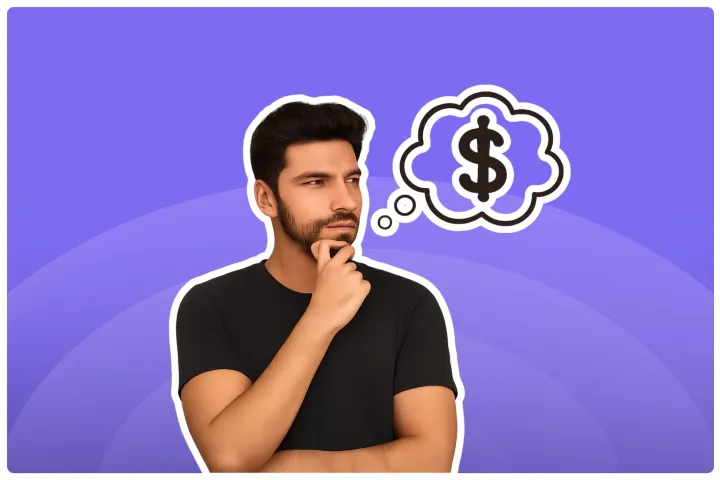Influencer Marketing Agreement: Complete Info (2025)
Master influencer marketing agreements with our complete guide! Find templates, tips, and expert advice to streamline your influencer partnerships.

Ready to team up with influencers and watch your brand soar? That's awesome! Influencer marketing is booming, and for good reason. When you find the right voice to share your story, magic happens. But, hold up! Before you dive headfirst into exciting collaborations, let's talk about something super important: the Influencer Marketing Agreement.
Think of it as the "friendship band" of your brand-influencer relationship. It keeps things clear, fair, and fun for everyone involved. You wouldn't build a house without a blueprint, right? Similarly, you shouldn't launch an influencer campaign without a solid agreement. It’s not about being stuffy or overly formal; it’s about being smart and setting everyone up for success.
This guide is here to walk you through everything you need to know, making it easy and, dare I say, even a little bit exciting! Let's make sure your next influencer campaign is not just creative, but also crystal clear and protected.
What Is an Influencer Marketing Agreement?
Simply put, an Influencer Marketing Agreement is a formal contract. It is a written document. This document clearly outlines the entire collaboration between your brand and an influencer. Think of it as the rulebook for your campaign game. It details all the important stuff – what the influencer will do, what you will provide, how much they get paid, and all the legal bits and bobs.
This agreement is not just a piece of paper; it's a powerful tool. It serves to protect both you (the brand) and the influencer. It makes sure everyone is on the same page before the campaign kicks off. This clarity is golden. It prevents those awkward "oops, I thought you meant..." moments down the line.
When expectations are set upfront, the entire collaboration runs smoother. Both parties know their roles, responsibilities, and rights. This leads to a more positive and productive partnership. Ultimately, a well-drafted agreement helps ensure that the campaign achieves its goals without any hitches. It’s your roadmap to a successful and stress-free influencer collaboration. Cool, right? 😎
Why Brands Need an Influencer Marketing Agreement?
You might be thinking, "Okay, an agreement sounds official, but do I really need one, especially for smaller campaigns?" YES, you absolutely do! Seriously, this is a non-negotiable for smart brands. The influencer marketing space in India is growing like crazy – it's projected to reach a whopping ₹3,375 crore by 2026! With so much activity, having a clear agreement is more crucial than ever.
Let's break down why these agreements are your brand's best friend:
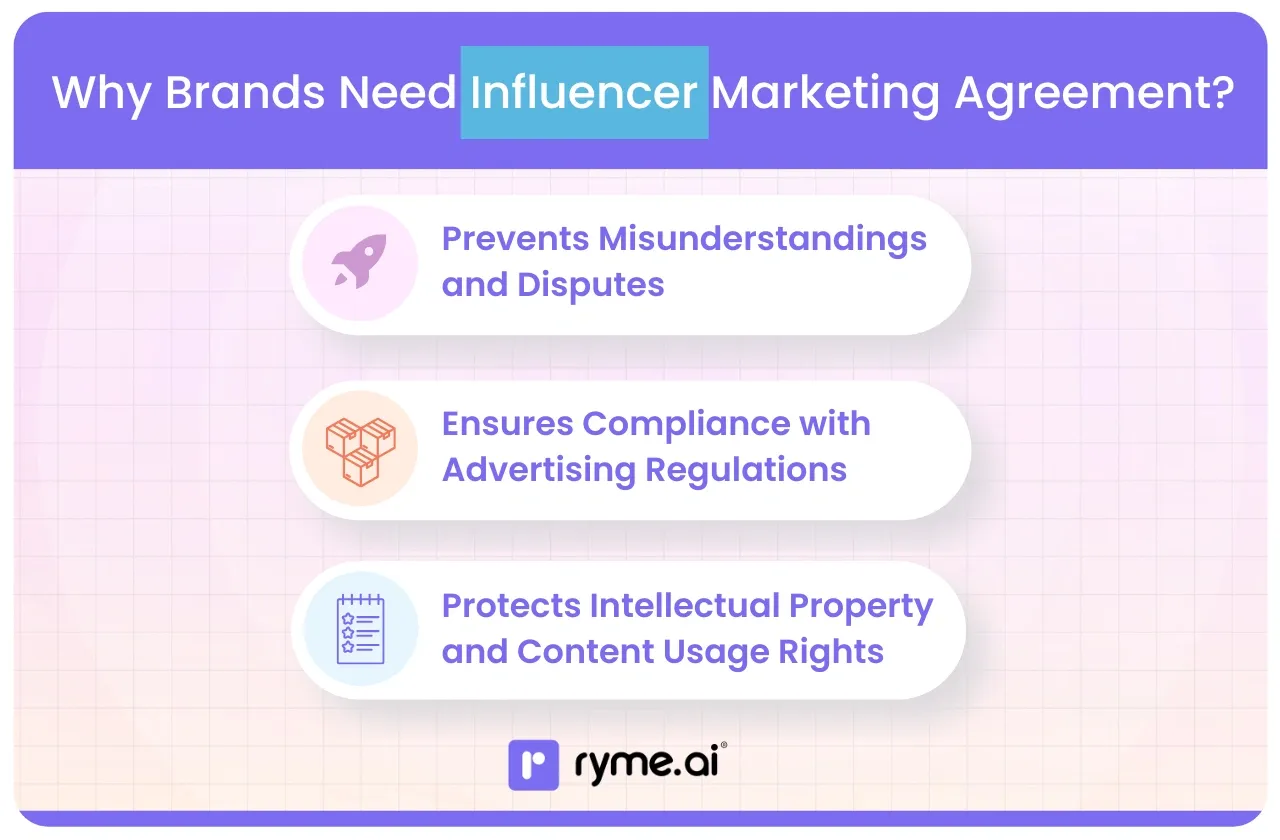
1) Prevents Misunderstandings and Disputes
This is a big one. Imagine you expect an influencer to create five Instagram posts and three Stories, but they thought it was just three posts. Awkward! 😬 An agreement clearly lists all deliverables, timelines, and specific requirements. This means no guesswork.
Clarity is Key: It details the exact number of posts, types of content (e.g., Reel, static post, blog article), platforms (Instagram, YouTube, etc.), posting dates, and any specific "dos and don'ts" for the content.
Avoids "He Said, She Said": If a disagreement pops up later ("I never agreed to that!"), the written agreement is your single source of truth. This can save you a lot of headaches, time, and even money.
Disputes in influencer marketing often arise from these very ambiguities regarding scope or payment. While specific statistics on disputes are hard to pin down globally, industry experts consistently point to unclear expectations as a primary cause. A clear contract minimizes this risk significantly.
Smooths the Workflow: When everyone knows what's expected, the campaign flows much better. The influencer can focus on creating amazing content, and you can focus on your overall marketing goals.
2) Ensures Compliance with Advertising Regulations
This is super important for staying on the right side of the law. Both global and local authorities are cracking down on undisclosed ads.
FTC and ASCI Guidelines: In the US, the Federal Trade Commission (FTC) has clear rules. Their 2023 updated guidelines emphasize that disclosures must be clear and conspicuous. In India, the Advertising Standards Council of India (ASCI) also has robust guidelines for influencer advertising. ASCI's latest updates (April 2025) even provide specific nuances for health and finance influencers. These guidelines mandate clear disclosure of paid partnerships using tags like #Ad, #Sponsored, or #PaidPartnership, placed prominently.
Mandatory Disclosures: Your agreement must state that the influencer is required to clearly disclose their material connection to your brand. This usually means including specific hashtags like #ad, #sponsored, or #PaidPartnership in a visible place.
Protects Your Brand's Reputation: Failing to comply can lead to warnings, penalties, and, importantly, damage to your brand's credibility. Consumers value transparency. An agreement shows you're committed to ethical advertising. Your audience will appreciate the honesty! 👍
3) Protects Intellectual Property and Content Usage Rights
When an influencer creates content for your brand, who owns it? Can you use it on your website or in your ads? An agreement sorts this out.
Content Ownership: The contract specifies who owns the intellectual property (IP) rights to the content created (photos, videos, text). Often, the influencer might own the copyright to their original work, but the brand licenses its use.
Usage Rights (Licensing): It will detail how, where, and for how long your brand can use the influencer's content. Can you use it on your social media channels? Your website? In paid ads? For how many months? These are crucial details.
Avoids Future Conflicts: Imagine the campaign is a huge success, and you want to repurpose a fantastic video created by the influencer for a TV ad a year later. If your agreement didn't cover this, you might face demands for additional (and potentially hefty) fees or even a flat-out "no." Defining usage rights upfront saves you from these future surprises and potential costs.
Think of Priya, a fashion brand owner. She collaborated with an influencer for an Instagram campaign. They had a verbal chat, but no written agreement. The influencer posted, the campaign did okay, but then Priya saw her campaign images used by the influencer to promote a competing brand a month later! Priya was also unsure if she could use the influencer’s high-quality photos on her own e-commerce site. A simple agreement could have clarified ownership, usage rights, and exclusivity, saving Priya a lot of stress.
Without an agreement, you're navigating a high-stakes game with no rules. With one, you're setting a clear path for a successful, respectful, and legally sound partnership. It’s a win-win! 🎉
Key Components of an Influencer Marketing Agreement
Alright, now that you're convinced (you are, right? 😉) that an influencer marketing agreement is essential, let's get into the nitty-gritty. What exactly should this super-document contain? A good agreement is like a well-made thali – it has a bit of everything, all working together to create a satisfying experience!
Here are the key components you absolutely need to include:
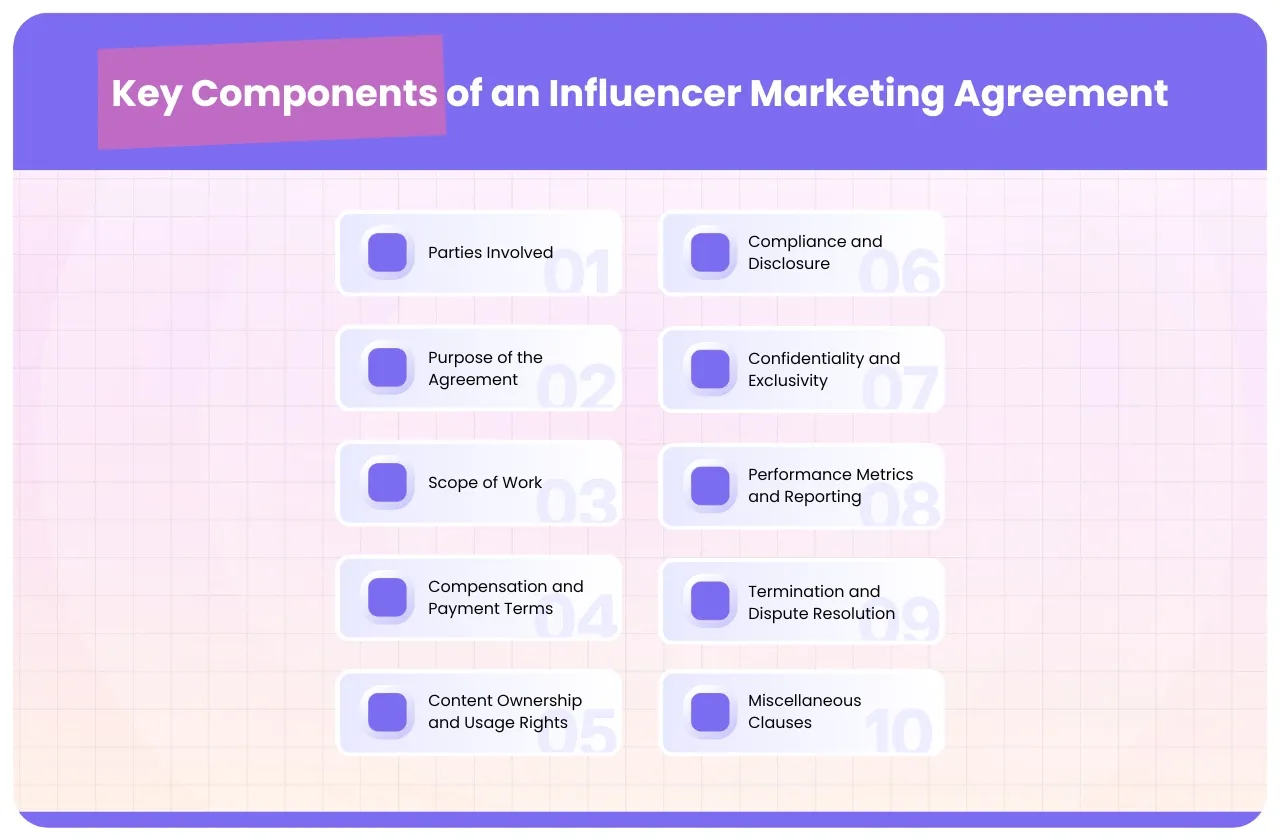
1) Parties Involved
This is the "who's who" of the agreement. It sounds basic, but getting it right is crucial.
- Legal Names and Addresses: You need the full legal names of both your brand (your registered business name) and the influencer. If the influencer operates as a business, use that name. Include the registered addresses for both parties.
- Brand: [Your Company's Full Legal Name], a company incorporated under the laws of [Your Country/State of Incorporation], with its principal place of business at [Your Full Address].
- Influencer: [Influencer's Full Legal Name or Registered Business Name], residing at/with its principal place of business at [Influencer's Full Address].
- Contact Person (Optional but Recommended): It’s often helpful to list the primary contact person for each party, along with their email and phone number, for day-to-day communication.
- Why it matters: This clearly identifies who is legally bound by the terms of the agreement. If there are any legal issues, this information is fundamental.
Example Snippet:
"This Influencer Marketing Agreement (hereinafter referred to as the "Agreement") is entered into on [Date] (the "Effective Date") by and between:
Brand: InnovateTech Solutions Pvt. Ltd., a company registered in India, with its office at 123 Tech Park, Bangalore, Karnataka, India (hereinafter referred to as "Brand"),
AND
Influencer: Riya Sharma, an individual residing at 456 Creative Lane, Mumbai, Maharashtra, India (hereinafter referred to as "Influencer").
Brand and Influencer may be referred to individually as a "Party" and collectively as the "Parties"."
2) Purpose of the Agreement
This section sets the stage. It’s a clear, concise statement about what the collaboration aims to achieve.
- Campaign Objectives: Briefly describe the campaign. Is it to launch a new product? Increase brand awareness? Drive traffic to your website? Promote a specific event?
- Overall Goals: What are you hoping to get out of this partnership? For instance, "To promote Brand's new 'Summer Glow' skincare line to the Influencer's audience, generating engagement and driving sales."
- Why it matters: This helps keep both parties focused on the desired outcomes throughout the campaign. It provides context for all the other clauses in the agreement.
Example Snippet:
"The purpose of this Agreement is to outline the terms and conditions under which the Influencer will provide promotional services to the Brand for its upcoming 'EcoVibe Fitness App' launch campaign (hereinafter referred to as the "Campaign"). The primary objectives of the Campaign are to increase awareness of the EcoVibe Fitness App among the Influencer's audience, drive app downloads, and generate positive social media engagement."
3) Scope of Work (Deliverables)
This is one of the most critical sections. Get super specific here! No room for vague language. This is where you detail exactly what the influencer needs to do.
Content Types:
- Specify the exact types of content: e.g., Instagram static posts, Instagram Reels, Instagram Stories (and how many frames per Story), YouTube videos (long-form, Shorts), blog posts, TikTok videos, tweets, Facebook posts, etc.
- Mention any specific formats: e.g., unboxing video, tutorial, review, lifestyle shot.
- Platforms: List the social media platforms where the content will be published.
Quantity and Frequency:
- How many pieces of content in total?
- How often should they post? (e.g., "One Instagram Reel per week for four weeks," or specific dates like "Post 1 on June 5th, Post 2 on June 12th").
Content Requirements & Guidelines:
- Key Messages: What specific points must the influencer include about your product/service?
- Call to Action (CTA): What do you want the audience to do? (e.g., "Swipe up to shop," "Download the app," "Use code XYZ for a discount"). Provide the specific links or discount codes.
- Hashtags & Mentions: List mandatory hashtags (e.g., your brand hashtag, campaign hashtag, #ad) and accounts to tag (e.g., @YourBrand).
- Visual Guidelines (Optional): Any specific aesthetic? (e.g., "bright and airy," "product clearly visible"). You can refer to a separate brand style guide if you have one.
- "Do Not" List: Anything the influencer should avoid? (e.g., mentioning competitors, using profanity, depicting unsafe use of the product).
Approval Processes and Timelines:
- Draft Submission: When must the influencer submit content drafts for your review? (e.g., "Drafts for all content to be submitted 5 business days before the scheduled posting date.")
- Review Period: How long will you (the brand) take to review and provide feedback? (e.g., "Brand will provide feedback within 2 business days of draft submission.")
- Revisions: How many rounds of revisions are included? (e.g., "Up to two rounds of reasonable revisions are included in the compensation.")
- Final Approval: A statement that content must be approved by the brand in writing (email is fine) before going live.
- Posting Schedule: Reiterate the agreed-upon posting dates and times (or time windows).
- Why it matters: This section leaves no doubt about what needs to be created and when. It’s the blueprint for the actual work. According to industry reports, unclear deliverables are a major source of friction. A detailed Scope of Work prevents this.
Example Snippet (for an Instagram post):
"Scope of Work:
Influencer agrees to provide the following services:
1) Content Creation & Publication:
Deliverable 1: One (1) Instagram Feed Post
- Platform: Instagram
- Content Theme: Influencer to showcase Brand's 'ZenScent' candle in a home relaxation setting. Post should highlight the candle's natural ingredients and calming aroma.
- Key Message: "Discover tranquility with ZenScent candles, made with all-natural soy wax and essential oils. Perfect for unwinding after a long day."
- Call to Action: "Shop now via the link in my bio! Use code RELAX15 for 15% off your first order." (Brand to provide unique tracking link).
- Mandatory Tags/Hashtags: @BrandZenScent, #ZenScent, #RelaxWithZen, #HomeFragrance, #Ad
- Draft Submission Deadline: July 10, 2025
- Brand Review & Feedback: Within 48 hours of submission. Up to one round of revisions.
- Scheduled Post Date: July 18, 2025 (between 6 PM - 8 PM IST)
Deliverable 2: Three (3) Instagram Story Frames
- Platform: Instagram
- Content Theme: Behind-the-scenes of using the ZenScent candle, perhaps while reading or meditating. Include a swipe-up link directly to the product page.
- Key Message: Similar to the feed post, emphasizing immediate relaxation.
- Call to Action: Swipe-up link.
- Mandatory Tags/Hashtags: @BrandZenScent, #ZenScent, #Ad (on each frame)
- Draft Submission: Same as feed post.
- Scheduled Post Date: July 19, 2025 (to be live for 24 hours)
Content Approval: All content (captions, images, videos) must be submitted to Brand for written approval via email prior to publishing. Brand reserves the right to request reasonable edits to ensure alignment with brand values and campaign objectives."
Pro-Tip: Consider creating a simple Content Brief template that you can attach as an appendix to the agreement for each specific piece of content. This keeps the main agreement cleaner.
4) Compensation and Payment Terms
Money talk! 💰 This section must be crystal clear to avoid any payment disputes.
Payment Structure:
- Flat Fee: A fixed amount for the agreed-upon deliverables (e.g., "₹25,000 for the entire scope of work"). This is common.
- Commission/Affiliate: Payment based on performance, like a percentage of sales generated through a unique affiliate link or discount code. (e.g., "10% commission on all net sales generated through the Influencer's unique code 'RIYA10'").
- Product-Only (Barter): If payment is in the form of free products or services, clearly state the value of these products/services. (e.g., "Influencer will receive Brand's 'Ultimate Gadget Bundle' valued at ₹15,000 as full compensation.") Be mindful that for tax purposes, barter is often treated as income.
- Combination: It could be a flat fee plus commission, or product plus a smaller fee. (e.g., "₹10,000 flat fee plus the 'ProSkincare Kit' (value ₹5,000).")
Payment Schedule:
When will the influencer be paid?
- Upfront: Full payment or a percentage (e.g., 50%) before work begins. This is common for newer influencers or to secure their commitment.
- Upon Completion: Full payment after all deliverables are successfully published.
- Milestones: Payment in installments based on completion of certain deliverables (e.g., "50% upon signing the agreement, 50% upon successful completion and publication of all content").
- Net Terms: For example, "Net 30 days" means payment will be made within 30 days of invoice receipt after work completion. Be fair; influencers often run small businesses and long payment cycles can be tough.
- Payment Method: How will you pay? (e.g., bank transfer (NEFT/IMPS), UPI, PayPal). Get the influencer's payment details.
- Invoicing: Specify if the influencer needs to submit an invoice, and what details it should include (GSTIN if applicable, PAN, etc.).
Reimbursement for Expenses (If Applicable):
Will you cover any additional costs? (e.g., travel for a location shoot, purchasing props).
State this clearly. If you won't cover expenses, say so.
If you will, define the process for approval and reimbursement (e.g., "Pre-approved expenses up to ₹2,000 will be reimbursed upon submission of original receipts.")
Why it matters: Clear payment terms are vital for a good relationship. Late or disputed payments are a sure way to sour a partnership. In 2023, a survey by an influencer marketing platform (though not specific to India) showed that 53% of brands are moving towards performance-based payments, but flat-rate fees (19.6%) are still significant. Clarity, regardless of the model, is paramount.
Example Snippet (Flat Fee):
"Compensation:
Brand agrees to pay Influencer a total flat fee of Twenty Thousand Indian Rupees (₹20,000) plus applicable GST, for the full and satisfactory completion of all services outlined in the Scope of Work.
Payment Schedule:
- Fifty percent (50%) of the total fee (₹10,000 + GST) shall be payable upon signing this Agreement and submission of an invoice by the Influencer.
- The remaining fifty percent (50%) of the total fee (₹10,000 + GST) shall be payable within fifteen (15) business days of the successful publication of all agreed-upon content and submission of a final invoice.
- Payment Method: All payments shall be made via bank transfer to the account details provided by the Influencer.
- Expenses: No expenses will be reimbursed unless pre-approved in writing by the Brand."
5) Content Ownership and Usage Rights
This is about who owns the awesome content created and how your brand can use it.
Ownership:
Influencer Owns, Brand Licenses: Typically, the influencer (as the creator) owns the copyright to the photos, videos, and text they create. Your brand then gets a license to use that content. This is a common and often fair approach.
Brand Owns (Work-Made-For-Hire): In some cases, especially if the fee is substantial or the content is highly specific to a major campaign, brands might stipulate that the content is a "work made for hire." This means the brand owns all IP from the moment of creation. This needs to be stated very clearly and may affect the influencer's fee.
- Joint Ownership: Less common, but possible.
- Usage Rights (License Details): If the brand is licensing the content, get specific:
Permitted Uses: Where can you use the content?
- Organic Social Media (your brand's Instagram, Facebook, etc.)?
- Paid Social Media Ads (boosting posts, running ad campaigns with the content)?
- Website/Blog?
- Email Marketing?
- Print Materials (brochures, in-store displays)?
- Other Digital Advertising (e.g., display ads on other websites)?
Duration: For how long can you use the content? (e.g., "6 months from the date of first publication," "12 months," "in perpetuity" – though perpetuity for broad rights can be expensive and influencers may resist).
Territory: Where can you use the content? (e.g., "India only," "Worldwide").
Exclusivity of Use: Can the influencer use this specific content for other brands or their own promotions (not related to your campaign)? Usually, the specific campaign content is exclusively licensed to you for the agreed duration.
Modification Rights: Can your brand edit or alter the content? (e.g., cropping, adding text overlays). Influencers might want approval rights over significant modifications to protect their personal brand.
Why it matters: Lack of clarity here can lead to major issues. You don't want to assume you can use an influencer's post in a large ad campaign only to find out you don't have the rights, or that they want a huge additional fee. Defining this upfront manages expectations and budget.
Example Snippet (Influencer Owns, Brand Licenses):
"Content Ownership and Usage Rights:
5.1) Ownership: The Influencer shall retain all intellectual property rights, including copyright, to the content created under this Agreement ("Content").
5.2) License to Brand: Upon full payment to the Influencer, the Influencer grants the Brand a non-exclusive, worldwide, royalty-free license to use, reproduce, distribute, and display the Content for a period of twelve (12) months from the date of its first publication by the Influencer, solely for the Brand's marketing and promotional purposes on the following channels:
- Brand's official social media channels (Instagram, Facebook, Twitter).
- Brand's official website (www.yourbrand.com).
- Brand's email marketing newsletters.
5.3) Usage in Paid Advertising: The Brand may use the Content in paid social media advertising campaigns on Instagram and Facebook during the license period.
5.4) Modifications: The Brand may make minor modifications to the Content (e.g., cropping for different platform aspect ratios) but shall not materially alter the Content without the Influencer's prior written consent.
5.5) Influencer's Use: The Influencer agrees not to license or use the specific Content created for this Campaign for any other third-party brand promotion during the Brand's license period."
6) Compliance and Disclosure
This is all about playing by the rules and being transparent with your audience. 😇
Adherence to Advertising Standards:
- A clause stating that both the brand and the influencer will comply with all applicable laws, regulations, and advertising guidelines.
- Specifically mention FTC guidelines (if relevant for your audience) and ASCI's "Guidelines for Influencer Advertising in Digital Media" for campaigns in India.
Disclosure Requirements:
- Mandatory Disclosure: The influencer must clearly and conspicuously disclose that their content is sponsored or that they have a material connection with the brand.
- Accepted Disclosure Methods: Specify acceptable disclosure language/hashtags (e.g., #Ad, #Sponsored, #PaidPartnership, #BrandPartner). ASCI is very specific about these. Avoid vague terms like #collab (unless clearly understood as per ASCI's evolving stance for certain contexts), #sp, or burying the disclosure in a long list of hashtags.
- Placement: The disclosure should be easy to see. For example, ASCI recommends it be upfront in the caption/text, or clearly overlaid on images/videos. For videos, it should be present for long enough to be noticed.
- Brand Responsibility: As a brand, you are also responsible for ensuring the influencer makes these disclosures. The agreement should reflect this shared responsibility.
- Why it matters: Non-compliance can lead to legal trouble, penalties from regulatory bodies, and a loss of trust from consumers. Authenticity is huge in influencer marketing. In 2024, transparency remains a key concern for consumers interacting with influencer content. Making sure disclosures are handled correctly is paramount.
Example Snippet:
"Compliance and Disclosure:
6.1) Compliance with Laws: Both Parties agree to comply with all applicable laws, rules, and regulations, including but not limited to the Advertising Standards Council of India (ASCI) Guidelines for Influencer Advertising in Digital Media and any guidelines issued by the Federal Trade Commission (FTC) if applicable.
6.2) Disclosure of Material Connection: The Influencer agrees to clearly and conspicuously disclose their material connection to the Brand in all content created pursuant to this Agreement. This disclosure must be made in a manner that is easily understandable by the audience and compliant with ASCI guidelines (e.g., using #Ad, #Sponsored, or #PaidPartnership prominently at the beginning of the caption or as an overlay on visual content).
6.3) Brand Review of Disclosures: The Brand reserves the right to review and approve the Influencer's proposed disclosure method prior to content publication to ensure compliance. The Influencer agrees to make any reasonable changes requested by the Brand regarding the disclosure."
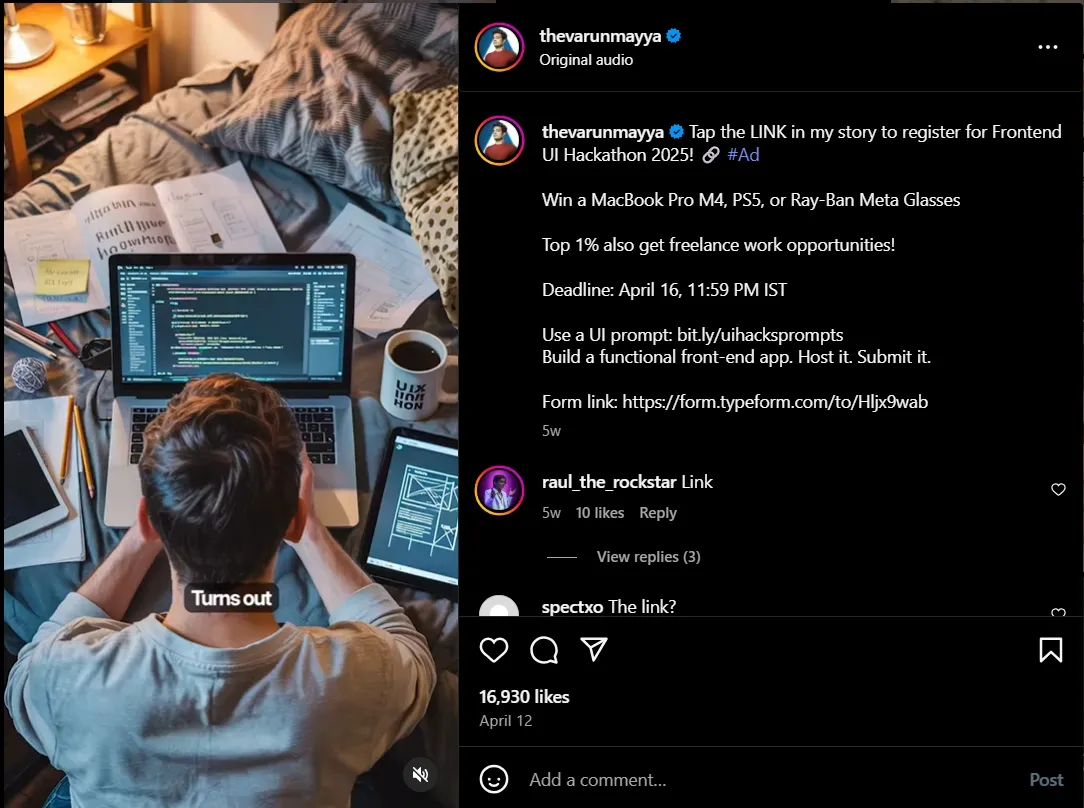
7) Confidentiality and Exclusivity
Protecting sensitive information and defining competitive boundaries.
Confidentiality (NDA Clause):
- The influencer may become privy to non-public information about your brand, products, or marketing plans before they are officially launched.
- This clause prevents the influencer from sharing this confidential information with third parties or using it for any purpose other than fulfilling the agreement.
- Define what constitutes "Confidential Information" (e.g., unreleased product details, campaign strategies, sales data, the terms of the agreement itself).
- Specify the duration for which the confidentiality obligation lasts (e.g., "during the term of this Agreement and for two (2) years thereafter").
Exclusivity:
Category Exclusivity: Prevents the influencer from promoting products/services from your direct competitors for a specified period (e.g., "during the Campaign Term and for 30 days before and 30 days after").
Be specific about what "competitor" means (e.g., "other D2C brands selling organic skincare products in India").
The duration and scope of exclusivity should be reasonable. Very long or broad exclusivity clauses might require higher compensation.
Content Exclusivity: As discussed under Usage Rights, ensures the specific content created for your campaign isn't reused for others.
Why it matters: Confidentiality protects your trade secrets and launch plans. Exclusivity ensures that the influencer's endorsement of your brand isn't diluted by them promoting a rival product simultaneously, which could confuse their audience and undermine your campaign's impact.
Example Snippet:
"Confidentiality and Exclusivity:
7.1) Confidentiality: During the term of this Agreement, the Influencer may have access to Brand's Confidential Information (including but not limited to unreleased product information, marketing plans, and the terms of this Agreement). The Influencer agrees not to disclose or use such Confidential Information for any purpose other than the performance of services under this Agreement, both during and after the term of this Agreement, for a period of three (3) years from the date of disclosure.
7.2) Exclusivity: During the Campaign Term (defined as [Start Date] to [End Date]) and for a period of thirty (30) days immediately following the Campaign Term, the Influencer agrees not to promote, endorse, or provide services to any other brand that primarily sells [e.g., 'artisanal coffee beans'] in India without the prior written consent of the Brand."
8) Performance Metrics and Reporting
How will you measure success? What numbers matter?
Key Performance Indicators (KPIs):
Define what metrics will be tracked to evaluate the campaign's performance. These should align with your campaign goals.
Examples:
- Awareness: Reach, Impressions, Views.
- Engagement: Likes, Comments, Shares, Saves, Engagement Rate (%).
- Traffic: Clicks (to website/landing page), Click-Through Rate (CTR).
- Conversions: Leads, Sales, App Downloads, Sign-ups (often tracked via unique promo codes or UTM links).
- Audience Growth: New followers for the brand (harder to directly attribute but can be a secondary metric).
Reporting Requirements:
- What to Report: Which KPIs should the influencer (or you, via platform analytics) report on?
- Frequency: When should reports be provided? (e.g., "within 7 days of the campaign's conclusion," or "weekly reports for ongoing campaigns").
- Format: How should the report be delivered? (e.g., screenshots of analytics dashboards, an Excel spreadsheet).
- Access to Analytics: Sometimes, brands request temporary access to an influencer's backend analytics for verification. This needs to be agreed upon. (Though many platforms are making it easier for creators to share specific post analytics with brand partners).
- Why it matters: Tracking performance helps you understand the ROI of your influencer marketing efforts. It shows what worked, what didn't, and helps you optimize future campaigns. While vanity metrics like likes are easy to see, focus on KPIs that genuinely impact your business goals. Research in 2024 continues to highlight that measuring ROI is a top challenge for marketers; clear reporting clauses help address this.
Example Snippet:
"Performance Metrics and Reporting:
8.1) Key Performance Indicators (KPIs): The success of the Campaign may be evaluated based on KPIs including, but not limited to: Reach, Impressions, Engagement Rate (Likes + Comments + Saves / Followers at time of post), Video Views (for Reels/Videos), and Click-Through Rate (CTR) on any provided tracking links.
8.2) Reporting: The Influencer agrees to provide the Brand with a performance report within seven (7) business days following the end of the Campaign Term. This report shall include screenshots from the native analytics dashboards of the respective social media platforms, detailing the agreed-upon KPIs for each piece of content. The Brand will provide a template for this report.
8.3) Tracking Links/Codes: The Influencer agrees to use any unique tracking links and/or promotional codes provided by the Brand for all relevant calls to action."
9) Termination and Dispute Resolution
What happens if things go wrong, or if one party needs to end the agreement early?
Term (Duration of Agreement): Define how long the agreement is valid. (e.g., "This Agreement shall commence on the Effective Date and continue until [End Date] unless terminated earlier as provided herein.")
Termination Clauses:
- Mutual Agreement: Both parties can agree to end the contract.
- Breach of Contract: If one party fails to meet their obligations (e.g., influencer doesn't post agreed content, brand fails to pay), the other party can terminate the agreement after giving a notice period (e.g., "10 days written notice to cure the breach"). Specify what happens upon such termination (e.g., payment for work completed, return of products).
- Insolvency/Bankruptcy: Provisions for termination if a party becomes insolvent.
- Influencer Conduct: Brands often include clauses allowing termination if the influencer engages in conduct that could harm the brand's reputation (e.g., involvement in scandals, illegal activities, offensive public statements). This is crucial for brand safety.
- Termination for Convenience (Optional): Allows either party to terminate without cause, usually with a notice period (e.g., "30 days written notice"). This offers flexibility but be careful about its implications.
Dispute Resolution:
How will you handle disagreements that can't be resolved informally?
- Mediation/Arbitration: Suggest these as first steps before resorting to court. It's often faster and less expensive. (e.g., "Any disputes arising out of this Agreement shall first be attempted to be resolved through mutual negotiation. If unresolved within 15 days, the dispute shall be referred to [mediation/binding arbitration] in [City, State].")
- Governing Law and Jurisdiction: (Covered more in Miscellaneous, but often linked here).
- Why it matters: Things don't always go as planned. Having clear termination and dispute resolution processes can save a lot of legal fees and stress if the relationship breaks down or if unforeseen circumstances arise. It provides a framework for an orderly exit if needed.
Example Snippet:
"Term, Termination, and Dispute Resolution:
9.1) Term: This Agreement shall be effective from the Effective Date and shall continue until all obligations of both parties have been fulfilled, or until [specific end date], unless terminated earlier in accordance with this section.
9.2) Termination for Cause: Either Party may terminate this Agreement with immediate effect by providing written notice to the other Party upon the occurrence of any of the following:
- The other Party commits a material breach of any term of this Agreement and fails to cure such breach within ten (10) days of receiving written notice thereof.
- The Influencer engages in any conduct or makes any statement that, in the reasonable opinion of the Brand, brings the Brand into disrepute or damages its reputation.
9.3) Effect of Termination: Upon termination, Influencer shall be paid for any approved Content already published up to the date of termination, less any outstanding advances. Brand shall have no further liability to Influencer.
9.4) Dispute Resolution: The Parties agree to attempt to resolve any dispute arising out of or relating to this Agreement through friendly negotiations. If the dispute is not resolved within thirty (30) days of initiating such negotiations, the Parties agree to submit the dispute to binding arbitration under the rules of the [Arbitration Institution Name, e.g., Mumbai Centre for International Arbitration (MCIA)] in Mumbai, India. The language of arbitration shall be English."
10) Miscellaneous Clauses
This is the "catch-all" section for other important legal boilerplates. Don't skip it!
Governing Law and Jurisdiction:
Which country's or state's laws will govern the agreement? (e.g., "This Agreement shall be governed by and construed in accordance with the laws of India.")
Where will legal disputes be handled? (e.g., "The courts of Mumbai, Maharashtra shall have exclusive jurisdiction over any disputes arising under this Agreement.") This is especially important if the brand and influencer are in different locations.
Force Majeure:
What happens if unforeseen events beyond either party's control prevent them from fulfilling their obligations? (e.g., natural disasters, pandemics, government actions).
This clause typically excuses non-performance for the duration of the force majeure event.
Amendment Procedures:
How can the agreement be changed or modified? (Usually, "This Agreement may only be amended by a written document signed by both Parties.") This prevents informal changes from being legally binding.
Entire Agreement:
States that this document contains the entire understanding between the parties and supersedes any previous discussions, agreements, or understandings (whether oral or written).
Severability:
If one part of the agreement is found to be invalid or unenforceable, the rest of the agreement remains in effect.
Notices:
How will official communications (like termination notices) be delivered? (e.g., "All notices under this Agreement shall be in writing and delivered by email to the addresses specified in Section 1, or by registered post.")
Independent Contractor Relationship:
Crucially, this clause clarifies that the influencer is an independent contractor, not an employee of the brand. This has significant implications for taxes, benefits, and liability. The brand is not responsible for the influencer's income tax, GST, etc.
Why it matters: These clauses cover important legal bases that protect both parties and ensure the agreement is robust and enforceable. They might seem like standard "lawyer stuff," but they are essential.
Example Snippet (Governing Law & Independent Contractor):
"Miscellaneous:
10.1) Governing Law and Jurisdiction: This Agreement shall be governed by and construed in accordance with the laws of India. The Parties irrevocably agree that the courts of Mumbai, Maharashtra, shall have exclusive jurisdiction to settle any dispute or claim that arises out of or in connection with this Agreement.
10.2) Independent Contractor: It is expressly understood that the Influencer is performing the services hereunder as an independent contractor and not as an employee of the Brand. Nothing in this Agreement shall be construed as creating an employer-employee relationship, partnership, or joint venture between the Parties. The Influencer shall be solely responsible for their own income taxes, GST, and other statutory obligations."
Phew! That’s a lot, but each component plays a vital role in creating a comprehensive and effective influencer marketing agreement. Taking the time to get these details right will pay off massively in smooth, successful campaigns. 🚀
Best Practices for Drafting an Influencer Marketing Agreement
Okay, you know what goes into an agreement. Now, let's talk about how to put it together effectively. Just having an agreement isn't enough; it needs to be a good agreement. Think of it like cooking your favorite dish – having the ingredients is step one, but the technique is what makes it delicious! 🧑🍳
Here are some best practices to keep in mind:
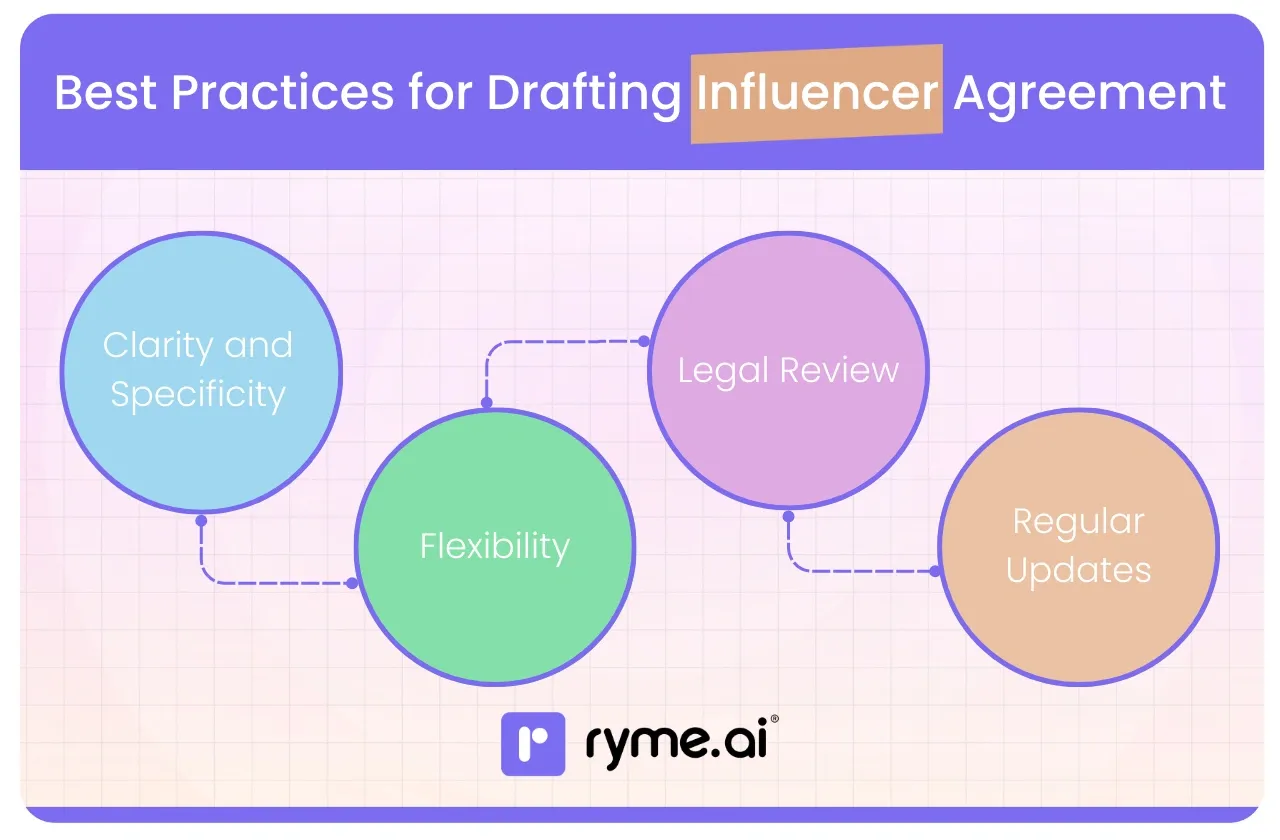
1) Clarity and Specificity: Be Crystal Clear! ✨
This is the golden rule. Ambiguity is your enemy.
- Use Simple Language: Avoid overly complicated legal jargon where possible. The agreement should be understandable to someone who isn't a lawyer (though legal review is still crucial – more on that later!). Write in plain English (or the language of your contract). Active voice and simple sentences are your friends.
- Instead of: "The aforementioned party of the second part shall endeavor to effectuate content dissemination..."
- Try: "The Influencer will post the content..."
- Define Key Terms: If you use terms like "Campaign Term," "Content," or "Confidential Information" repeatedly, define them clearly the first time they appear (as shown in the examples in the previous section).
- No Room for Guesswork: For deliverables, timelines, and payment, be as precise as possible. Don't say "a few posts"; say "three (3) Instagram feed posts." Don't say "prompt payment"; say "payment within 15 business days of invoice receipt."
- Provide Examples if Needed: For content guidelines or tone of voice, sometimes an example is worth a thousand words. You can even link to posts (from other non-competitor campaigns) that you like as a style reference, or attach a mood board.
- Why this helps: Clear and specific language prevents misunderstandings down the road. If both parties know exactly what's expected, there's less chance of disputes. It also makes the agreement easier to enforce if, heaven forbid, things go sideways.
2) Flexibility: Allow for Wiggle Room 🤸
While specificity is key, the world of social media can be unpredictable. Sometimes, a little flexibility is needed.
- Room for Creative Freedom (within limits): Influencers have built their audience because of their unique voice and style. While you need to provide guidelines and key messages, allow some room for their creativity to shine. Your agreement can state that content should align with the influencer's authentic style while incorporating brand requirements.
- Addressing Unforeseen Circumstances: What if a platform has an outage on a scheduled post day? What if the influencer gets sick? While the Force Majeure clause covers major events, consider how minor disruptions might be handled. Perhaps a clause that allows for mutually agreed-upon adjustments to posting schedules for reasonable causes.
- Content Iteration: The approval process should allow for feedback, but also acknowledge that some back-and-forth is normal. Specify the number of revision rounds included.
- Why this helps: A rigid agreement that doesn't account for real-world scenarios can be frustrating for both sides. A little built-in flexibility (with clear processes for managing changes) can lead to a more collaborative and less stressful partnership. Remember, you're working with creative individuals.
Story Time: Imagine a brand, "FitFuel Snacks," had a super strict contract with an influencer, Aman. The contract said Aman had to post a picture in a specific gym at 9 AM on a Tuesday. That Tuesday, the gym had an unexpected closure due to a plumbing issue. Because the contract was so rigid and had no clause for minor adjustments, it caused unnecessary stress. A more flexible approach could have allowed Aman to communicate the issue and propose an equally effective alternative in consultation with FitFuel.
3) Legal Review: Get a Professional Eye 🧐⚖️
This is a big one, folks. Don't skip it!
- Consult a Lawyer: Once you've drafted your agreement (or if you're using a template), have it reviewed by a legal professional who understands contract law and, ideally, media/advertising law. This is especially important if you're dealing with high-value contracts, complex deliverables, or international influencers.
- Tailor to Your Needs: A lawyer can help you tailor the agreement to your specific industry, campaign goals, and jurisdiction. Generic templates found online might not cover everything you need or might not be compliant with local laws (like specific nuances in Indian contract law or ASCI guidelines).
- Protect Your Interests: A lawyer will ensure the agreement adequately protects your brand's interests regarding IP, usage rights, liability, and compliance. They can spot potential loopholes or problematic clauses.
- Why this helps: Investing in a legal review upfront can save you a ton of money and headaches in the long run. It's like an insurance policy for your influencer campaigns. It ensures your agreement is legally sound, enforceable, and truly protects your business. This isn't just for big corporations; even smaller businesses benefit immensely.
4) Regular Updates: Keep it Fresh 🔄
The digital marketing space, especially influencer marketing, changes fast. Your agreement shouldn't be a "set it and forget it" document.
- Annual Review: At least once a year, review your standard influencer agreement template.
- Changes in Laws and Regulations: Advertising guidelines (like those from ASCI or FTC) can be updated. Platform policies also change. Your agreement needs to reflect the current legal landscape. For instance, ASCI's guidelines on disclosures and for specific sectors like finance and health have seen updates; your agreement needs to incorporate these.
- New Platforms & Content Formats: New social media platforms emerge, and content trends shift (hello, short-form video!). Your scope of work and usage rights sections might need updating to include these.
- Evolving Marketing Strategies: As your brand's marketing strategy evolves, your influencer agreement should evolve with it to ensure it still meets your campaign objectives.
- Learnings from Past Campaigns: Did you encounter any issues or ambiguities in past collaborations? Use those learnings to strengthen your agreement for future campaigns.
- Why this helps: An outdated agreement might not offer the protection you need or might not cover new ways you want to work with influencers. Keeping it current ensures it remains a relevant and effective tool for your brand. It shows you're on top of your game!
By following these best practices, you'll create influencer marketing agreements that are not only comprehensive but also foster positive, productive, and legally sound relationships with your influencer partners. It’s about building a strong foundation for awesome collaborations! 😊
How ryme.ai Enhances Influencer Marketing Campaigns
Now, you might be thinking, "Drafting and managing all these agreements, finding the right influencers, tracking results... it sounds like a lot of work!" And you're right, it can be. But guess what? This is where cool platforms like ryme.ai can be a total game-changer for your brand! 🚀
Think of ryme.ai as your super-smart assistant for influencer marketing, helping you streamline the whole process so you can focus on what you do best – building your amazing brand. Let's see how:
1) Affordable and Scalable Solutions: Marketing for Everyone! 💰📈
One of the biggest hurdles for many brands, especially small to medium-sized businesses (SMBs) and startups, is the cost associated with traditional influencer marketing agencies or platforms.
Zero-Commission Model: This is HUGE! Many platforms or agencies take a hefty commission on influencer fees or campaign spend. Ryme.ai's zero-commission model means more of your budget goes directly into your campaign and to the influencers, maximizing your ROI. You get full value for your spend.
No Minimum Budget Requirements: Whether you're just starting with a modest budget of, say, ₹10,000 for a micro-influencer campaign, or you're ready to invest ₹5,00,000, ryme.ai caters to you. This makes influencer marketing accessible to brands of all sizes. You don’t need deep pockets to start leveraging the power of influencers. This flexibility is a massive win, allowing you to test the waters, learn, and scale your efforts as you grow.
Why this is awesome for you: You can dip your toes into influencer marketing without breaking the bank. As your confidence and results grow, you can easily scale up your campaigns. It democratizes influencer marketing!
2) AI-Powered Influencer Matching: Finding Your Perfect Fit! 🎯🤖
Finding the right influencers – those whose audience truly aligns with your target customers and whose values match your brand – is half the battle. Scrolling endlessly through Instagram? Ain't nobody got time for that! 😅
Advanced Algorithms: Ryme.ai uses sophisticated AI to do the heavy lifting. Its algorithms analyze tons of data points from influencer profiles – not just follower counts, but engagement rates, audience demographics (age, location, interests), content quality, niche, past performance, and even sentiment.
Precise Targeting: This means ryme.ai can connect your brand with influencers whose followers are actually your potential customers. For example, if you're a sustainable fashion brand targeting eco-conscious millennials in metro cities in India, the AI will help find influencers who specifically cater to that demographic and have a genuine interest in sustainability. This is way more effective than just picking someone with a lot of followers. According to a 2024 report by The Cirqle, AI can cut influencer-vetting time by as much as 70%.
Reduced Bias, Better Matches: AI can help reduce human bias in selection, focusing purely on data-driven compatibility, leading to more authentic and impactful partnerships.
Why this is awesome for you: You save tons of time and effort in the discovery phase. More importantly, you increase the chances of your campaign resonating with the right audience, leading to better engagement and conversion rates. It’s like having a matchmaking expert for your brand!
3) Robust Analytics and Reporting: Know What's Working! 📊📈
"Okay, the campaign is live... now what?" Measuring success and understanding your ROI is crucial.
Real-Time Performance Data: Ryme.ai provides access to real-time analytics. You can track key metrics (like reach, engagement, clicks, conversions if using trackable links/codes) as your campaign unfolds, not just at the end.
Deep Analytics & Insights: Go beyond surface-level numbers. Ryme.ai can offer deeper insights into which influencers are driving the best results, what type of content is performing well, and overall campaign effectiveness. This might include data on audience sentiment or demographic performance.
Informed Decision-Making: These analytics help you make data-backed decisions. You can see what's working and what's not, allowing you to optimize current campaigns (if they are ongoing) and plan future campaigns more effectively. A McKinsey report (2023) found predictive tools can boost efficiency by 15-20%.
Why this is awesome for you: No more guessing! You get clear visibility into your campaign's performance. This allows you to demonstrate the value of your influencer marketing spend and continuously improve your strategy for even better results next time. 🤓
4) Streamlined Content Workflows: Smooth Collaboration! 🤝📝
Managing the back-and-forth of content approvals, revisions, and scheduling with multiple influencers can quickly become chaotic.
Efficient Collaboration Tools: Ryme.ai likely offers features that streamline these workflows. This could include:
- Centralized communication channels.
- Shared calendars for content scheduling.
- Integrated content submission and approval systems.
- Version control for revisions.
Reduced Delays: When the process is organized and clear, there are fewer delays. Influencers know where to submit content, brands know where to review it, and feedback is tracked in one place.
Improved Content Approval Processes: This means content gets reviewed, revised (if needed), and approved faster, ensuring your campaign stays on schedule. This systematic approach also helps in ensuring all the agreed-upon points from your influencer marketing agreement (like disclosure, key messages) are being followed.
Why this is awesome for you: Less admin headache! 🎉 You save time, reduce the chance of miscommunication, and ensure your campaigns launch smoothly and on time. This allows both you and the influencer to focus on creating and delivering great content, rather than getting bogged down in logistical nightmares.
Example:
Let's imagine "Riya's Kitchen," a brand selling organic spices. Riya used to spend hours manually searching for food bloggers, then more hours emailing back and forth about content, often losing track of approvals in long email chains. By switching to a platform like ryme.ai, she could:
Use its affordable plan that fits her startup budget.
Quickly find relevant food influencers whose audience loves trying new recipes, thanks to AI matching.
Track which influencer's discount code drove the most sales through the platform's analytics.
Manage all her content approvals and feedback in one organized dashboard, saving her precious time.
Ryme.ai essentially acts as a force multiplier for your influencer marketing efforts, making sophisticated strategies accessible and manageable for brands of all sizes. It helps you work smarter, not just harder, to achieve your influencer marketing goals. Sounds pretty good, right? 😉
Conclusion
Influencer marketing agreements are crucial for successful and legally sound partnerships. They serve as a blueprint, ensuring clarity, protecting your brand, and complying with regulations in a rapidly growing market like India. Key components include Scope of Work, Compensation, Content Ownership, Usage Rights, and Disclosure.
Best practices involve clarity, flexibility, legal review, and regular updates. Platforms like ryme.ai can simplify campaign management. A well-crafted agreement fosters trust and professionalism, leading to better collaborations and results. Therefore, you can embrace influencer marketing strategically for your brand's benefit.
